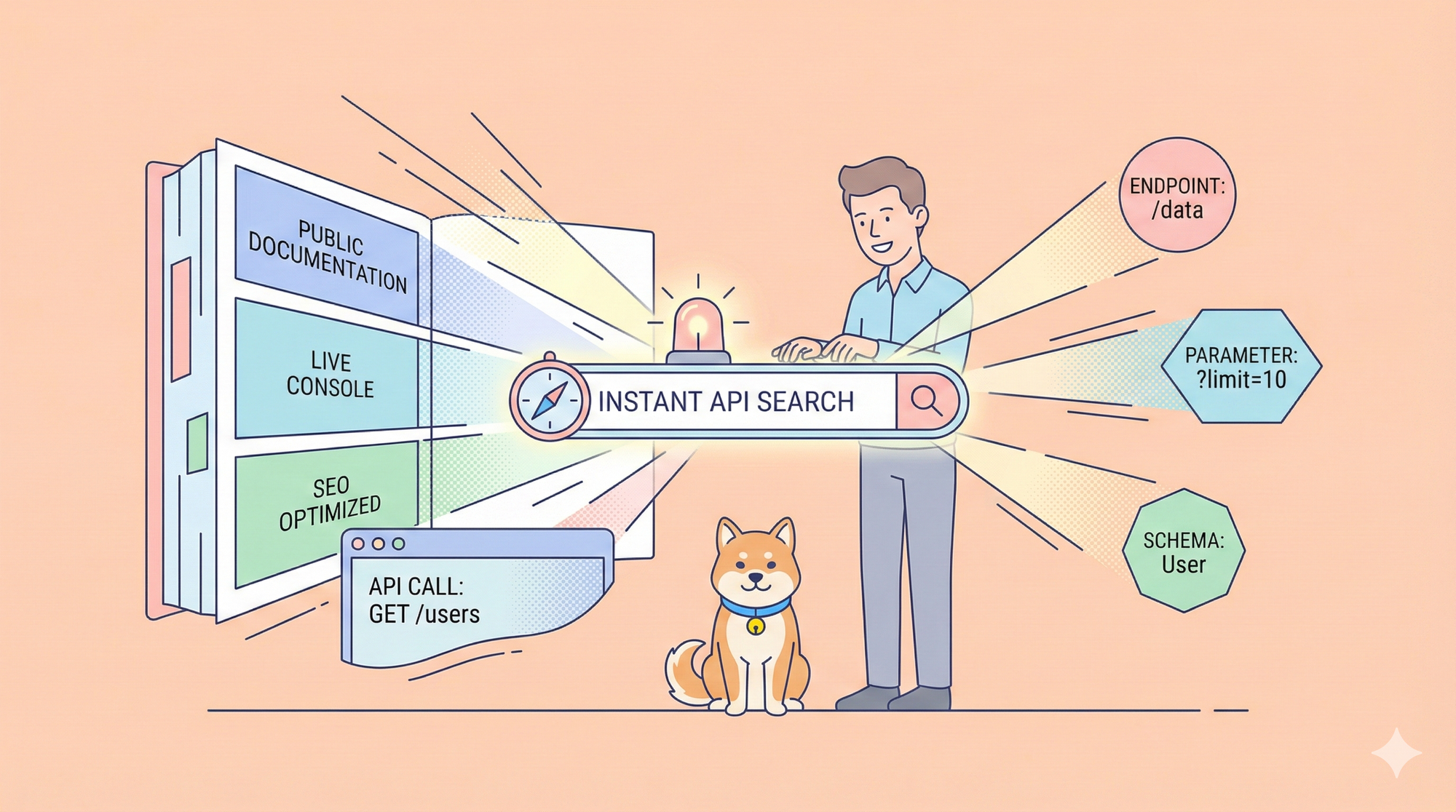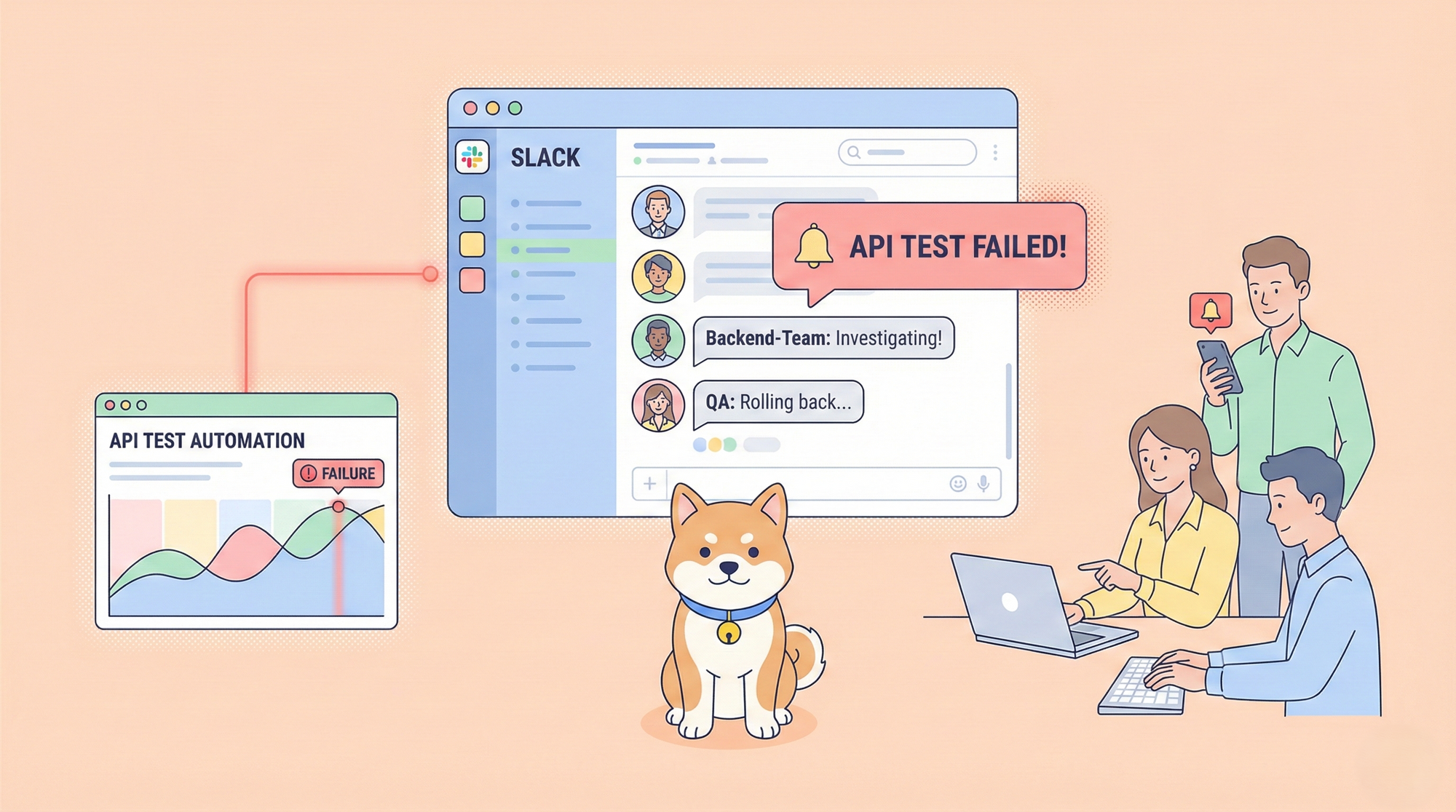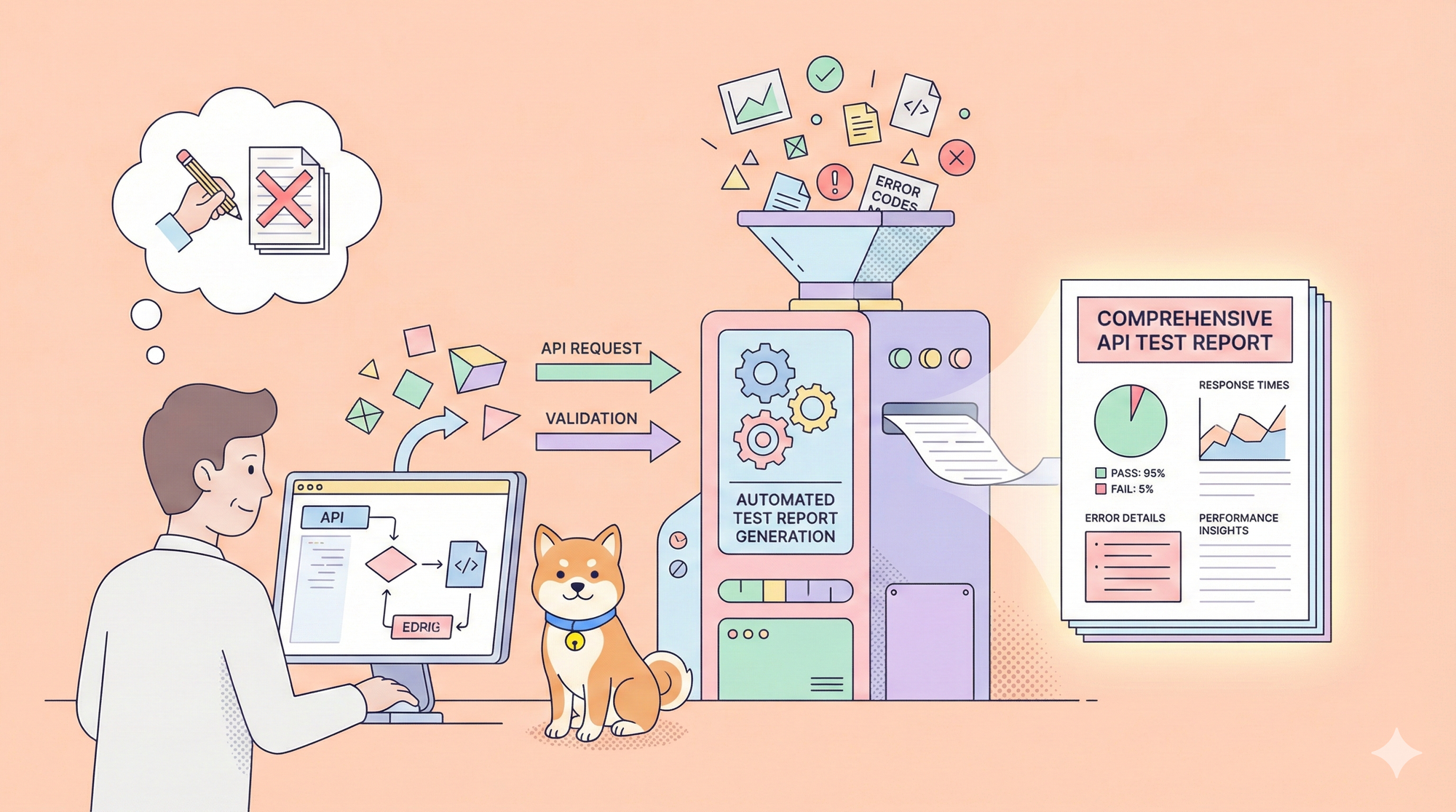Welcome to the future of API design in 2025! In a world where software is king, APIs are the royal messengers, ensuring seamless communication between diverse applications. But creating these messengers is no small feat – it requires skill, precision, and the right set of tools.
Whether you're a seasoned pro or just starting, the right API design tool can turn a daunting task into a delightful experience. So let's embark on a journey through the top 10 API design tools that are making waves this year!
Click the "Download" button now and elevate your API design process!
Why API Design Matters?
Before we delve into the tools, let's take a moment to understand the significance of API design. In today's interconnected digital landscape, APIs are the linchpins that hold various applications and services together. They allow different software systems to communicate, exchange data, and work in harmony. But why is good API design so crucial?

User Experience: At the heart of every great application is a well-designed API. It ensures smooth interaction between different services, directly impacting the user experience. A seamless API means happier users.
Scalability and Flexibility: Well-designed APIs are scalable and flexible, allowing businesses to adapt and grow without overhauling their entire IT infrastructure. They make it easier to add new features and integrate with other services.
Ease of Maintenance: A well-structured API simplifies maintenance. It’s easier to update and fix, saving valuable time and resources in the long run.
Security: In an era where data breaches are a constant threat, a well-designed API is critical for ensuring data security and privacy. It acts as a gatekeeper, controlling access and protecting sensitive information.
Future-proofing: A robust API design is more likely to stand the test of time, adapting to technological advancements and changing user needs.
10 Best API Design Tools for Your Need
Here’s the list overview to ten of the best API design tools that can help streamline the process of creating, documenting, and managing APIs:
1. Apidog
Apidog takes the lead with its perfect blend of simplicity and functionality. It’s designed for those who want a straightforward yet powerful tool, offering features that streamline the API development process.

Highlight Features:
- User-Friendly Interface: It's a breeze to navigate, making API design accessible to all.
- Real-Time Collaboration: Collaborate with ease, enhancing team productivity.
- Comprehensive Documentation: Clear, detailed documentation guides you every step of the way.
- Automated Testing: Streamlines the testing process, ensuring efficiency and accuracy.
2. SwaggerHub
SwaggerHub is like the wise mentor of API design tools. It brings a sense of order and clarity, making sure that your API designs adhere to the highest standards. With SwaggerHub, you’re not just building APIs; you’re crafting digital masterpieces.

Highlight Features:
- Integrated API Standards: Ensures consistency with industry standards.
- Version Control: Effortlessly manage changes and revisions.
- Interactive Documentation: Makes understanding complex APIs easy and engaging.
3. Postman
Postman is the jack-of-all-trades in API design. It’s versatile, user-friendly, and packed with features that cater to both beginners and experienced developers. With Postman, API testing and development become a walk in the park.
Highlight Features:
- Easy Testing: Simplifies the testing process.
- Collaboration Features: Enhances teamwork and communication.
- Extensive Integrations: Seamlessly integrates with other tools and systems.
4. Stoplight
Stoplight is the visionary artist of API tools. It transforms the complex process of API design into a visual and interactive experience, enabling developers to see the big picture and fine details of their API creations.

Highlight Features:
- Visual Editor: Makes API design intuitive and visual.
- Mock Servers: Test APIs without a full backend setup.
- Style Guides: Ensures consistency and elegance in API design.
5. API Blueprint
API Blueprint is the community's choice for API documentation. It’s a tool that understands the importance of clear, concise, and human-readable documentation in the API development process.
Highlight Features:
- Markdown-based Editor: Simplifies the documentation process.
- Prototyping: Fast-tracks the feedback and improvement cycle.
- Community-driven: Offers strong support and resources.
6. RAML
RAML is the architect of API design, offering a structured and methodical approach. It’s perfect for those who appreciate organization and efficiency in their API development workflow.

Highlight Features:
- Reusable Components: Saves time and maintains consistency.
- Structured Documentation: Keeps information organized and accessible.
- User-friendly Syntax: Easy for beginners and efficient for pros.
7. SoapUI
SoapUI is the workhorse of API testing. It’s built for those who need robust, comprehensive testing capabilities, providing a suite of tools that ensure your APIs are not only functional but also resilient.
Highlight Features:
- Automated Testing: Makes testing straightforward and automated.
- Performance Testing: Ensures your API can handle real-world stress.
- Mock Services: Allows for easy and independent testing.
8. Kong Studio
Kong Studio stands tall as the innovator in API design. It’s for the forward-thinkers and tinkerers who love to experiment and push the boundaries of what’s possible in API development.
Highlight Features:
- Extensive Plugins: Offers customization and flexibility.
- Efficient Testing: Accelerates the testing process.
- Powerful Analytics: Provides valuable insights into API performance.
9. Microsoft Azure API Management
Azure API Management is the guardian of API ecosystems. It’s a tool designed for scalability and security, ensuring that your APIs can grow and evolve safely within the digital landscape.

Highlight Features:
- Scalability: Adapts to growing API needs.
- Security Features: Prioritizes the safety of your APIs.
- Developer Portal: Simplifies developer engagement and management.
10. IBM API Connect
IBM API Connect is the strategist of API tools, perfect for enterprise-level applications. It combines advanced analytics with robust security, making it ideal for businesses that demand nothing but the best in API management.
Highlight Features:
- Cloud Compatibility: Embraces the cloud environment.
- Advanced Analytics: Delves deep into API performance data.
- Enterprise-grade Security: Provides top-tier security measures.
11.curl
curl is the Swiss army knife of command-line tools for interacting with APIs. Lightweight yet powerful, it enables developers to send requests and inspect responses, making it an essential tool for API testing and design.
Highlight Features:
- Wide Protocol Support: Works with HTTP, FTP, SMTP, and more.
- Flexible Requests: Supports GET, POST, PUT, DELETE, and custom headers.
- Built-in Security: SSL and TLS support for secure API interactions.
12. HTTPie
HTTPie brings simplicity and readability to the command line, turning API requests into a clean, human-friendly syntax. It's an ideal tool for both beginners and experienced developers seeking a straightforward API interaction.
Highlight Features:
- Simple Command Syntax: Intuitive and easy to learn.
- JSON Support: Automatically formats and highlights JSON responses.
- Plugins & Extensions: Extend functionality for various environments.
13. Hurl
Hurl is a unique command-line tool for running HTTP requests with ease, especially focusing on testing and validating APIs with user-friendly syntax. It's perfect for developers looking to automate their API testing process.
Highlight Features:
- Assertion Support: Built-in validation of HTTP responses.
- Request Chaining: Seamlessly chain multiple requests.
- File Upload: Simplifies multipart form-data requests.
14. Insomnia
Insomnia is the go-to tool for developers who want a polished, UI-based API client. Its modern interface and versatile features make it a favorite for both designing and testing REST, GraphQL, and WebSocket APIs.

Highlight Features:
- User-Friendly UI: Sleek interface for managing API requests.
- Environment Variables: Manage different environments with ease.
- GraphQL Support: Built-in features for GraphQL APIs.
15. ReadMe
ReadMe is the API documentation specialist, enabling teams to create beautiful, interactive API docs that are more than just static pages. It's the tool that bridges the gap between API design and user-friendly documentation.
Highlight Features:
- Interactive Documentation: Lets users test APIs directly from the docs.
- Auto-Generated Code Snippets: Makes it easier for users to get started.
- Collaboration Tools: Enables teams to work together on API documentation.
16.Apollo
Apollo is a leader in the GraphQL ecosystem, providing developers with tools to create, manage, and test GraphQL APIs efficiently. It empowers teams to optimize API performance and handle large-scale API designs.
Highlight Features:
- GraphQL Gateway: Easily manage multiple GraphQL services.
- Query Optimization: Boost API performance with smart caching.
- Schema Management: Ensure consistency across API schema versions.
17. Mulesoft
Mulesoft is the enterprise powerhouse for API design, offering comprehensive tools to build, integrate, and manage APIs at scale. It's the ideal platform for businesses that need a robust API management solution.
Highlight Features:
- API Lifecycle Management: Manage the entire API lifecycle from design to deployment.
- Cloud Integration: Easily integrate APIs with cloud services.
- Security Features: Built-in security protocols for enterprise-grade APIs.
18. RESTAssured
RESTAssured is the tester’s dream for Java developers, providing an elegant and expressive API for testing REST services. Its fluent style allows for easy writing of tests, particularly useful during API design.
Highlight Features:
- Easy Setup: No need to manually parse responses, simplifying testing.
- BDD-Style Syntax: Supports Behavior-Driven Development (BDD).
- JSON/XML Support: Seamless handling of JSON and XML formats.
Why Choose Apidog for Efficient and Streamlined API Design
In the rapidly evolving field of API development, choosing the right tool is crucial for success. Apidog has emerged as a standout choice for many developers. Here are five key reasons why Apidog is an excellent option for your API design needs:

Intuitive User Experience: Apidog boasts a user-friendly interface, making it accessible for both novice and experienced developers. This ease of use streamlines the API design process, enabling quick onboarding and efficient workflow.
Enhanced Team Collaboration: With features that support real-time collaboration, Apidog facilitates effective teamwork, allowing multiple developers to work on the API simultaneously, leading to faster development cycles and cohesive project outcomes.
Robust Documentation Support: Apidog excels in providing comprehensive and easily navigable documentation. This is crucial for ensuring the API is used correctly and efficiently, reducing misunderstandings and errors.
Automated Testing Features: The tool offers automated testing capabilities, which are essential for validating API functionality and reliability. This automation saves significant time and effort, ensuring a high-quality end product.
Scalability and Security: Designed with growth in mind, Apidog ensures that APIs can handle increasing loads and complexity. Additionally, its strong focus on security means that APIs developed with Apidog are robust and protected against potential breaches.
Recommended Article:

Conclusion
In conclusion, choosing the right API design tool is essential for enhancing development efficiency and collaboration. Tools like Apidog, Swagger, and Stoplight offer unique features for designing, testing, and documenting APIs, catering to various project needs. By leveraging these tools, teams can streamline their workflows and deliver high-quality APIs that meet modern software demands, ultimately improving the overall API design experience.




